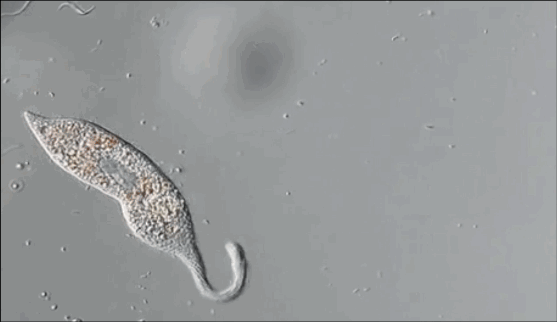The year’s best videos starring really, really small things
The secret lives of starfish larvae.

Wonders of the world come in all sizes, and to see the smallest, you’ll need access to a microscope—or some truly incredible videos. With Nikon’s annual Small World in Motion video competition, science buffs get a chance to experience theater on a microscopic stage. Onward, for the winners.
This year’s winning video was made by William Gilpin, a PhD student at Stanford, and his colleagues. Using a time lapse technique similar to the methods used by astronomy photographers to capture stars streaking across the sky, Gilpin filmed tiny beads in the water around a single starfish larvae, watching as the starfish manipulated the water currents to bring food into its tiny body. This behavior hadn’t been seen before, and studying the manipulation of the water currents could one day allow for better water filtration systems.
Second prize went to Charles Krebs, who filmed the giraffe-like ciliate Lacrymaria olor, as it stuck its neck out to feed on other, smaller microbes. Lacrymaria olor is a natural hunter, picking out its pray with its long appendage.
Wim van Egmond took third prize in the contest, with a beautiful time lapse of flower…ing mold. The fruiting bodies of Aspergillus niger usually ‘bloom’ on fruits.
Prizes for the first, second, and third place winners was given in the form of money to be used toward the purchase of Nikon products: $3,000, $2,000, and $1,000 respectively.
Honorable mentions were awarded to 17 other videos, ranging from cheese mites on a cheddar rind to growing Paracetamol (acetaminophen) crystals and killer cells attacking a cancer cell. Get a taste of each video, below.